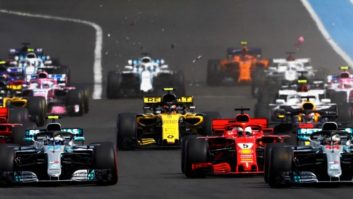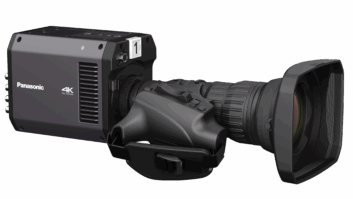
While the next generation codec High Efficiency Video Coding (HEVC) has yet to be ratified by the ITU, compression experts are pumping R&D into the technology, which could have a big impact both on live transmission data rates (especially to mobiles) and production at higher resolutions. The aim of HEVC (also known as H.265) is to reduce bandwidth by as much as 50% over H.264 MPEG4 AVC and tests to date have reportedly achieved that target. According to David Wood (pictured), chair of the ITU working party in the Broadcasting Service Study Group and deputy director of the EBU’s Technology and Development team: “Greater compression efficiency means that broadband networks and mobiles that use them can deliver higher quality video before congestion problems set in, or before measures (like MPEG-DASH) must be taken to stream at lower quality because of congestion. Essentially ‘bits are bucks’ and the bit rate gain is what will make HEVC attractive.” Tests have apparently revealed gains in excess of 50%. Indeed Ericsson claims its new HEVC/H.265 encoder (SVP 5500 – http://www.tvbeurope.com/ibc-content/full/hevc-encoder-for-ericsson) is capable of real-time encoding at resolutions up to HD for the delivery of live and linear TV over mobile networks. Efficiency gains “When interpreting the performance of a compression system, you need to understand that some scene compositions are harder to compress than others,” said Wood. “Programme content has a range of ‘criticalities’. The 50% estimate might be content of average ‘criticality’. But, if you just look at content which has high criticality, the specific saving will probably be less.” Another way of looking at this, he says, is to relate actual bit rates to the proportion of content that you want delivered without impairment. “We won’t know the ‘real’ savings of HEVC until subjective evaluations are made with a full hardware decoder and test material with a representative range of criticalities,” said Wood. “More than that, over time manufactured equipment performance improves within the same system spec, so figures become just a snapshot in time.” The percentage gains compared to AVC for compressing video to mobiles will be greater in practice than those for UHDTV, “because we are not so nit-picky about impairments with video for mobiles,” he observed. “In that case we are working with average quality and in the UHDTV case we are less tolerant to any impairment at all because perfect quality is the name of the game.” On the one hand this will benefit streaming technologies, notably to boost the quality and efficiency of online video services. It will also pave the way for two Ultra HDTV systems: at 4k (3840 pixels wide by 2160 high) and 8k (7680×4320). Going Ultra HD With 4k and 8k as UHDTV options, and world governments coming together to agree on a specification, there are currently two differing strategic views. “There is a school of thought that says that the 8k system is a bridge too far, and we need to start with a 4k approach,” said Wood. “That is a view that some broadcasters and consumer manufacturers hold. There is a view that the NHK holds, that 4k will probably only be around for a few years before the 8k system comes along. You wouldn’t want to re-engineer your studio just for five years, so why not go straight to the 8k system? “Which is the right answer – that is a difficult strategic decision, and I wish I had a bigger brain.” By Adrian Pennington







